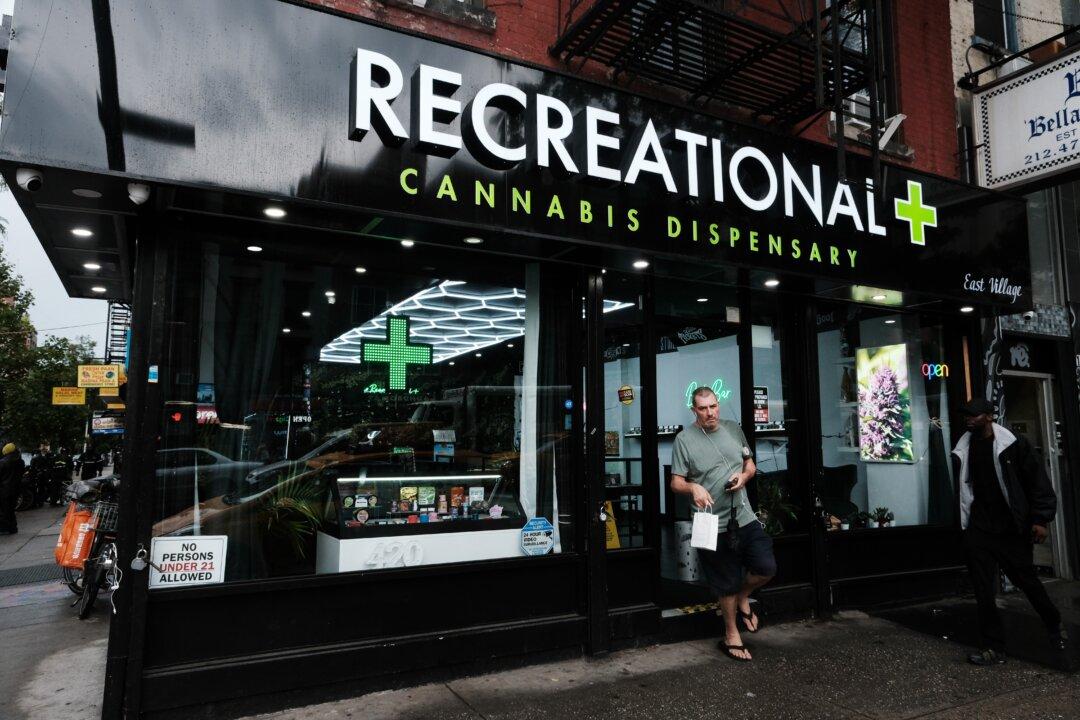Millions of Americans could be drinking lead-contaminated water according to a new survey by the Environmental Protection Agency (EPA). The agency’s seventh Drinking Water Infrastructure Needs Survey and Assessment (DWINSA) found an estimated 9.2 million lead service lines carrying water into homes nationwide.
“Every community deserves access to safe, clean drinking water,” EPA Administrator Michael S. Regan said in an April 4 press release.
Florida topped the nation with the highest number of lead pipes, followed by Illinois, Ohio, Pennsylvania, and Texas. The first-of-its-kind survey was mandated by America’s Infrastructure Water Act of 2018.
“Out of the 3,629 public water systems surveyed, 3,526 responded, which is a 97% response rate, well above the 90% goal,” the report stated.
The survey results will be used to direct billions of dollars from the Bipartisan Infrastructure Law to locate and remove lead water pipes across the country based on the greatest need over the next two decades. Previously, a state’s share of funds for replacing lead pipes was based on its general infrastructure need rather than the number of lead pipes it had.
“Our water infrastructure is aging and in need of repair to withstand the challenges of the 21st century,” the report stated. “We must maintain and modernize our Nation’s water infrastructure to deliver clean drinking water and safely transport and treat wastewater.”
Florida is estimated to have 1.16 million lead service lines, accounting for 12.62 percent of the country’s total. Illinois had the second-highest at 1.04 million or 11.35 percent of the total.
Ohio, Pennsylvania, and Texas followed with 745,061, 688,697, and 647,640 lead lines, respectively.
Cost to Repair
The cost of the 20-year water infrastructure need is estimated at $625 billion, up 32 percent over the estimated cost of $472.6 billion in the sixth DWINSA (pdf).The Bipartisan Infrastructure Law has directed $50 billion in water and wastewater infrastructure improvements nationwide between fiscal years 2022 and 2026. The law has earmarked$15 billion for replacing lead service lines nationwide.
“In its second year of implementation, $6 billion of Bipartisan Infrastructure Law funding will be available to states, Tribes, and territories through the DWSRF [Drinking Water State Revolving Fund],” according to a press release.
“Of that funding, the Bipartisan Infrastructure Law will invest $3 billion in lead service line identification and improvement, $800 million to address PFAS and other emerging contaminants, and $2.2 billion in other critical drinking water system improvements.”
About $500 million in additional funds will also be available through the DWSRF annual appropriations, the release noted.
Dangers of Lead Exposure
Water becomes contaminated when a chemical reaction known as corrosion occurs in pipes or fixtures containing lead. Lead is not visible in the water, and it has no taste or smell.Lead exposure can cause serious harm to the health of children and adults.
When lead is ingested, it quickly enters the blood and rises after it is swallowed, according to the Centers for Disease Control and Prevention. The level will slowly decrease once the exposure is stopped.
In children, it can cause damage to the brain and nervous system, slowed growth and development, learning problems, speech problems, lower IQ, and more.
Exposure in adults can cause increased blood pressure, decreased kidney functions, and reproductive problems for men and women.
There is no safe level of lead in the blood, and a blood test is the best way to check for lead exposure.
The EPA recommends that consumers contact their water utility company to get their water tested if they are concerned about contamination.
The agency also recommends running water to flush pipes before drinking or cooking with it. Also, only use cold water for drinking and cooking. When using a water filter, ensure it is certified to remove lead.





